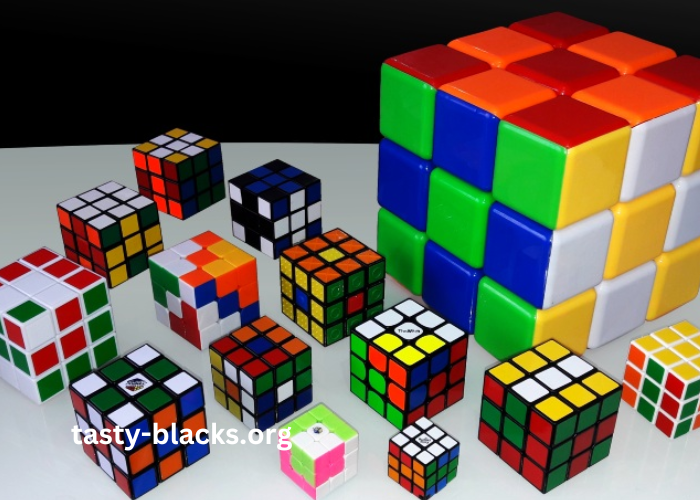The cube, a geometric shape with equal sides and perfect symmetry, has fascinated mathematicians, architects, and artists for centuries. Its simplicity belies the complexity it can represent in various fields, from mathematics and physics to architecture and art. The term shape:9z1iywztrba= Cube refers not just to a static object but also to a multitude of applications and representations across different disciplines.
In this article, we will explore the definition, properties, historical significance, and applications of the cube, particularly focusing on the aspects encompassed by the term shape:9z1iywztrba= Cube. We will delve into the mathematical properties that define it, its cultural impact, and how it appears in technology and design. Each section aims to provide a thorough understanding of why this shape holds a significant place in our world.
What is a Cube?
At its core, a cube is a three-dimensional geometric figure with six equal square faces. Each face meets at right angles, creating a uniform structure. The mathematical definition of a cube is straightforward, yet the implications of its properties are profound.
The cube’s dimensions are defined by its length, width, and height, which are all equal. This equality leads to various interesting mathematical properties, such as volume and surface area calculations. The volume of a cube is calculated by raising the length of one of its sides to the third power, while the surface area is determined by multiplying the area of one face by six.
The appeal of the cube lies in its symmetry and regularity. In mathematics, the cube serves as a fundamental example of a regular polyhedron, and its properties are used to teach students about spatial reasoning and geometry. The term shape:9z1iywztrba= Cube encapsulates the essence of this geometric marvel, highlighting its significance in mathematical studies.
What Are the Mathematical Properties of a Cube?
The cube has several mathematical properties that make it a fundamental object of study in geometry. Understanding these properties is crucial for both academic pursuits and practical applications.
First and foremost, the cube has eight vertices, twelve edges, and six faces. This characteristic makes it one of the simplest three-dimensional shapes, allowing for easy manipulation in both theoretical and practical applications. The edges of a cube are all equal in length, and the angles formed at the vertices are all right angles.
The diagonal of a cube is another intriguing aspect. The space diagonal connects two opposite corners of the cube, and its length can be calculated using the formula d=a3d = a\sqrt{3}d=a3, where aaa is the length of one edge. This property is essential in various fields, including computer graphics and architectural design, where understanding spatial relationships is critical.
Moreover, cubes can be inscribed within and circumscribed around other geometric shapes. This relationship provides insights into dimensionality and spatial awareness, making the cube a vital tool in both education and professional practice.
How Has the Cube Influenced Art and Architecture?
The cube’s influence extends beyond mathematics and into the realms of art and architecture. Its clean lines and geometric precision have made it a favorite among artists and architects alike.
In art, the cube has been employed as a building block for larger structures and compositions. The works of artists such as Sol LeWitt and Donald Judd showcase how the cube can be used to explore concepts of space and perception. These artists have often utilized modular systems based on cubes, challenging viewers to rethink their understanding of space and form.
In architecture, the cube serves as a foundational element in many designs. Iconic buildings, such as the Apple Store in New York City, feature cube-like structures that draw attention while remaining functional. The simplicity of the cube allows architects to create striking designs that are both modern and timeless.
The relationship between the cube and architectural design extends to concepts of modularity and efficiency. Many contemporary buildings employ cube-like forms to maximize space and energy efficiency, showcasing how the shape remains relevant in modern construction.
What Is the Cube’s Role in Technology?
In today’s digital age, the cube has found a new role in technology, particularly in the fields of computer graphics and virtual reality. The concept of a cube is central to 3D modeling and animation, where it serves as one of the basic building blocks for creating complex shapes and environments.
In computer graphics, a cube can represent a simple object in a three-dimensional space. Programmers often use cubes to create textures and patterns in virtual environments. The manipulation of cube geometry allows developers to design intricate landscapes, characters, and structures in video games and simulations.
Furthermore, the advent of virtual reality (VR) has highlighted the importance of the cube as a spatial reference. VR environments often utilize cubes to create immersive experiences, providing users with a tangible sense of space. The term shape:9z1iywztrba= Cube thus captures not only the geometric essence but also its transformative role in technology.
How Do Cubes Appear in Nature?
Cubes and cube-like structures are not confined to human-made objects; they also appear in nature in various forms. Crystals, for instance, often form cubic shapes due to the orderly arrangement of their molecules. This natural occurrence showcases the intrinsic beauty and efficiency of the cube as a structural form.
Salt and sugar crystals are excellent examples of this phenomenon. When these substances crystallize, they often form perfect cubes, highlighting the natural propensity for order and symmetry in molecular structures. This relationship between the cube and nature invites deeper exploration into the principles of chemistry and physics.
Additionally, certain microorganisms exhibit cube-like forms, further emphasizing the significance of this shape in the biological world. The study of these structures can provide insights into how form and function are interconnected in various species, adding to our understanding of evolution and adaptation.
What Are the Cultural Significances of Cubes?
Beyond their mathematical and scientific implications, cubes hold cultural significance in various societies. The cube often represents stability, order, and structure, making it a powerful symbol in art and philosophy.
In many cultures, cubes are associated with the concept of balance and harmony. The six faces of the cube can symbolize the four cardinal directions and the elements of earth, air, fire, and water, reinforcing its role as a symbol of completeness.
In contemporary art, artists often use the cube as a motif to convey complex themes related to existence and perception. The cube’s simplicity allows for varied interpretations, making it a versatile symbol in modern artistic expression.
Moreover, the cube’s prevalence in popular culture—seen in films, literature, and video games—demonstrates its enduring relevance. The term shape:9z1iywztrba= Cube thus reflects not only its geometric nature but also its broader cultural implications.
How Is the Cube Used in Education?
The educational applications of the cube are extensive, particularly in teaching mathematics and spatial reasoning. The cube serves as an effective tool for demonstrating fundamental concepts in geometry, helping students grasp complex ideas through visual representation.
In classrooms, teachers often utilize physical cubes to teach volume, surface area, and geometric transformations. These tangible objects allow students to explore mathematical concepts in a hands-on manner, enhancing understanding and retention.
Furthermore, the cube is used in various educational games and activities that promote critical thinking and problem-solving skills. By engaging with cubes, students can develop their spatial awareness and learn to manipulate shapes in three-dimensional space.
The versatility of the cube as a teaching tool makes it an essential part of mathematics education, encouraging students to engage with geometric concepts in a meaningful way.
Conclusion
The exploration of shape:9z1iywztrba= Cube reveals the multifaceted nature of this geometric figure. From its mathematical properties to its influence on art, technology, and culture, the cube serves as a vital element in our understanding of the world.
As we have seen, the cube is not just a static object but a dynamic concept that permeates various aspects of life. Its applications in education, architecture, and technology highlight its relevance and importance in contemporary society. By recognizing the significance of the cube, we can appreciate the beauty and complexity inherent in this simple yet profound shape.
In conclusion, shape:9z1iywztrba= Cube encapsulates the essence of a geometric wonder that continues to inspire and inform across disciplines, making it a timeless subject of exploration and admiration.










